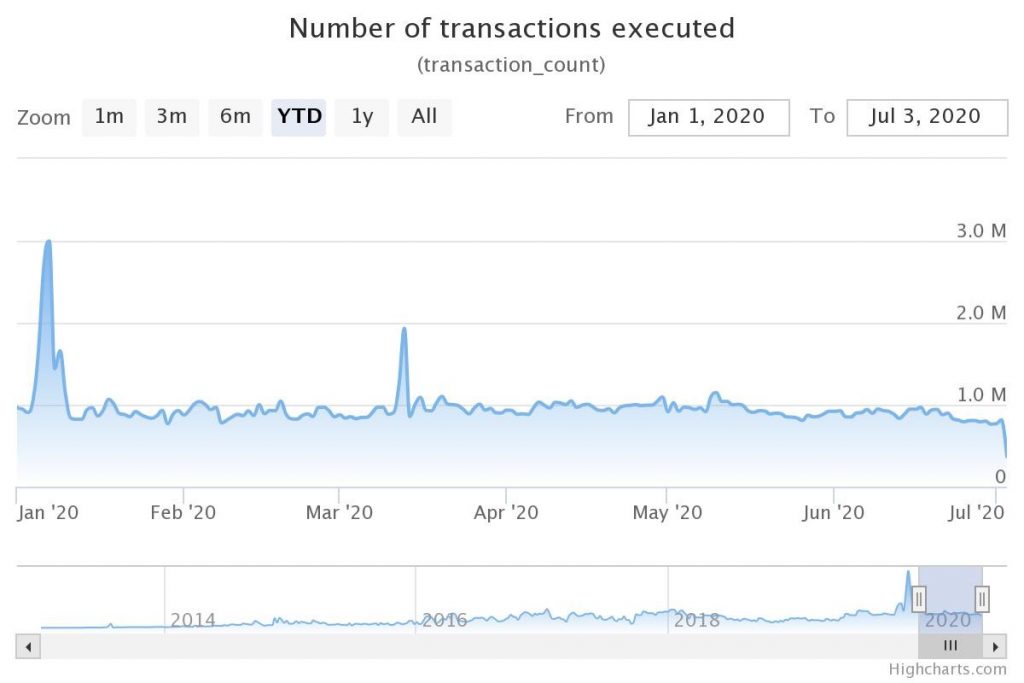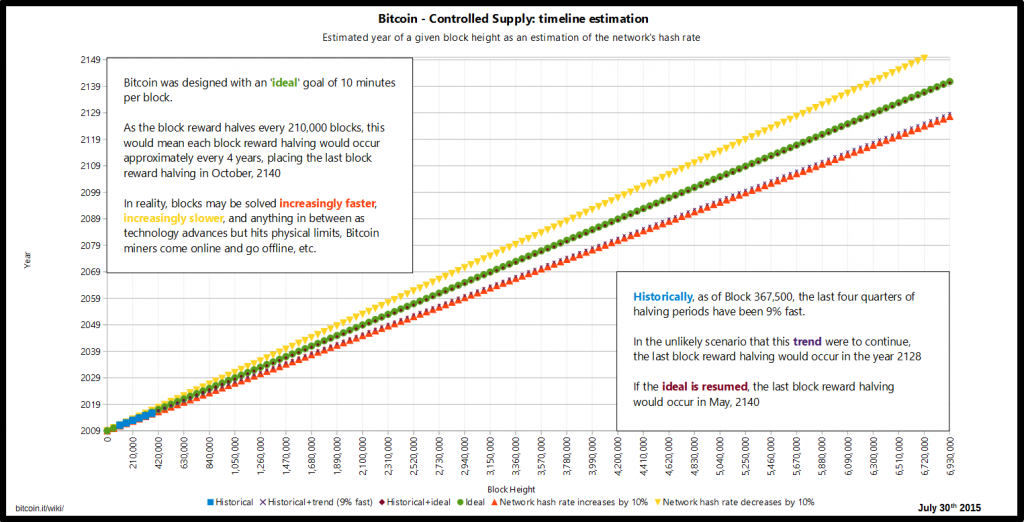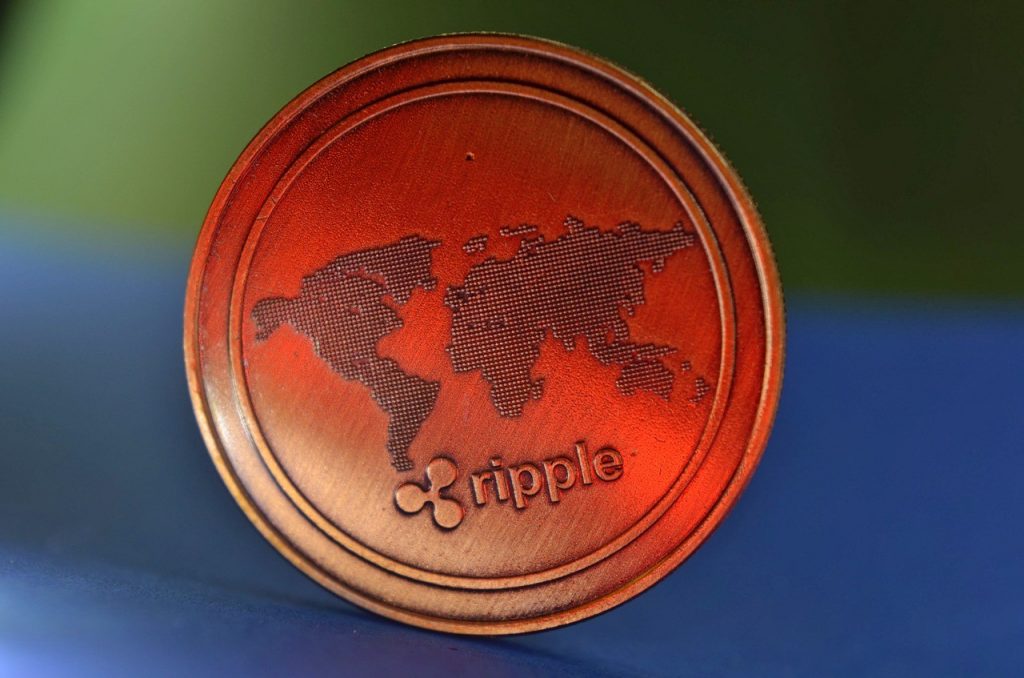Table of Contents
The cryptocurrency industry started with Bitcoin. Ripple came later but both are equally popular amongst cryptocurrency investors and enthusiasts.
Bitcoin, the cryptocurrency, by numbers has the largest market share. XRP (Ripple’s very own digital currency token) is not far behind and ranks on number 4, as per data from CoinMarketCap and CoinGecko.
Both cryptocurrency systems employ blockchain in their operation yet there are a few differences on some fundamental levels. To talk about those differences, we have to take into consideration their primary aspects – the protocols and the cryptocurrencies.
First, let’s discuss the protocol differences.
Bitcoin vs Ripple: Protocol Differences
The Bitcoin Protocol
Satoshi Nakamoto founded the Bitcoin protocol as a “Peer-to-Peer Electronic Cash System” in 2009.
Basically, it is a decentralized public ledger that records all bitcoin (BTC) transactions. All ledger entries are made only after the transactions are verified sufficiently, which is done by bitcoin miners. Miners solve complex mathematical algorithms to process different BTC transfers. They then add the transaction data to the blockchain.
Solving these math puzzles, verifying transactions, and consequently adding blocks to the blockchain requires considerable computing power and time. The quickest miners are rewarded for their efforts with an appropriate number of bitcoins. This is the ‘proof-of-work’ protocol that makes new BTC become a part of the Bitcoin economy.
After the latest halving event, the Bitcoin blockchain has been churning out nearly 900 bitcoins every day. For more information on bitcoin mining, check out the video below:
The Ripple protocols: RippleNet and XRPL
While the Bitcoin blockchain is an open platform for people to join, and contribute in it’s growth by transacting and mining, Ripple is a fintech company based in San Francisco, California with RippleNet being it’s unique fintech offering.
With RippleNet, the company intends to form a holistic ecosystem of banks, payment processors, and other financial institutions, enabling them to conduct super fast and efficient international payments. The primary idea is to enable real-time settlement of monetary transactions with adequate transparency and security.
Take a look at the video below to understand RippleNet’s design and it’s working:
RippleNet is Ripple’s financial technology facet, but there’s a decentralized aspect too. It’s the XRP Ledger or XRPL.
The XRP Ledger is a decentralized ledger secured by cryptography and powered by a network of peer-to-peer computers. XRPL’s native cryptocurrency XRP fuels all transactions on the network and together they are the primary operating force behind Ripple’s real-time financial transaction system.
It does not employ proof of work to verify transfers. Contrary to Bitcoin’s mining process, XRPL participants function as independent validating nodes and compare transaction records to ascertain the authenticity of transactions.
XRPL’s network of active validators are 153 in number and include universities, exchanges, and financial institutions.
Time and again, the company has constantly maintained that XRPL is an independent open-source platform and free from any kind of commercial association. This means that even if Ripple shuts down, the XRP Ledger will continue to operate normally.
Other Differences
Transaction Metrics
Bitcoin handles about 300,000 to 400,000 transactions per day with 7 – 15 transfers happening in a second. Confirmation times for transactions may range from several minutes to a few hours.
The XRP Ledger confirms transactions in 3-5 seconds. Data from the XRP metrics website, XRPSCAN reveals that XRPL has processed 800,000 – 1 million transactions per day in 2020.

BTC vs XRP: Cryptocurrency Differences
Cryptocurrency Supply and Circulation
Bitcoins have a maximum supply of 21 million tokens. No individual or centralized authority controls BTC’s circulation. One of the most distinctive features of bitcoin is that it is divisible. One BTC consists of 100 million smaller units known as satoshis.

XRP has a total supply of 100 billion coins. These are indivisible. Out of these 100 billion units, millions were distributed in various stages of airdrops, preliminary sales, or private placements. Banks too received XRP for their international payment trials.

Ripple ensured that token distributions didn’t affect the XRP supply. The current circulation is a little above 44 billion. There is a smart contract operated escrow system in place, that releases 1 billion coins every month in the market. It is programmed to take back all unused XRPs after the month to avoid oversupply or misuse.
Application
Since the last 11 years, bitcoin has become widely popular for being an extremely profitable investment asset, similar to gold. Most folks just buy and hold BTC for extended periods to reap exponential profits. Apart from this, bitcoin has recently seen a significant influx of institutional investors, who trade in bitcoin derivative offerings, like futures and options.
Ripple is in the business of adding an increasing number of banking and financial partners to its growing payments ecosystem. As per the website, more than 300 financial institutions in 40+ countries are already using RippleNet. XRP is at the heart of these partnerships as the digital asset makes inter financial interactions possible.
Ripple also has an additional service called On-Demand Liquidity, for its partners to conduct smooth monetary transfers using XRP. Some of Ripple’s Indian partners include IndusInd Bank, Kotak Mahindra Bank, YES Bank.
Even with their dissimilarities, Bitcoin and Ripple are interesting and promising cryptocurrency platforms and can make a world of difference to global financial systems.
In order to truly gauge the potential of these cryptocurrencies, you will have to own and use them yourself. WazirX offers seamless options for you to buy bitcoin or Ripple’s token XRP or both comfortably. For more details visit: https://wazirx.com
Further Reading:
What is Litecoin (LTC), Hows is it Different from Bitcoin
What are the Differences Between Ripple (XRP) and Ethereum (ETH)
What is the difference between Bitcoin, Ethereum, and Ripple?
What is the difference between Litecoin and Ethereum?
Difference between Litecoin (LTC) and Ripple (XRP)
What is the difference between a token and a Bitcoin?
India Rupee vs Bitcoin: 6 things you should compare
What are the Differences Between Peer-to-Peer and Regular Bitcoin Exchanges?
What are the Differences Between Bitcoin and Ethereum?
Frequently Asked Questions
Should I Invest In XRP 2023?
XRP is a virtual currency that was created by Ripple Labs. It is used to facilitate cross-border payments and is often referred to as a "bridge currency." XRP is one of the top Cryptos by market capitalization and is traded on many Crypto exchanges. You can consider investing in XRP in 2023, but it is also advisable to conduct your own research before making any investment decision.
Is Bitcoin Mining Free?
Bitcoin mining isn't free, but it can be tried on a budget. Bitcoin mining is an essential part of the blockchain ledger's upkeep and development and the act of issuing new Bitcoins. It is accomplished by the use of cutting-edge computers that tackle complicated computational arithmetic problems. The effort of auditor miners is rewarded. They're in charge of ensuring that Bitcoin transactions go off without a fuss and that they're legal.
Who Created Bitcoin?
Bitcoin is the first application of the concept of "cryptocurrency," first articulated in 1998 on the cypherpunks mailing list by Wei Dai, who proposed a new form of money that relies on cryptography rather than a central authority to manage its creation and transactions. Satoshi Nakamoto published the initial Bitcoin specification and proof of concept on the cryptography mailing list in 2009. Satoshi exited the project in late 2010, with little information about himself available. Since then, the community has evolved, with numerous people working on Bitcoin. Satoshi's anonymity has sparked unfounded fears, many of which may be traced back to a misunderstanding of Bitcoin's open-source nature.
How To Invest In Bitcoin?
Bitcoin may be invested in two ways: through mining or exchanges. Bitcoin mining is carried out by high-powered computers that solve challenging computational arithmetic problems that are too difficult to complete by hand and complex enough to tax even the most powerful computers. WazirX, a Bitcoin exchange, is another alternative.
What Is Bitcoin?
Bitcoin is a decentralized digital currency that may be purchased, traded, and traded without intermediary like a bank. Bitcoin is built on the blockchain, which is a distributed digital ledger. Wei Dai suggested a new kind of money that relies on cryptography rather than a central authority to oversee its production and transactions on the cypherpunks mailing list in 1998. Bitcoin was the first application of that notion. In 2009, Satoshi Nakamoto sent out the first Bitcoin specification and proof of concept to a cryptography mailing group.
Can XRP Reach $100 Dollars?
To reach $100, XRP must climb 270 times. At $100, the market capitalization of XRP would be $5.1 trillion. If XRP rose at a 25% annual pace, it would take at least 26 years to hit $100.
How To Mine Ripple Coins?
Ripple (XRP) cannot be mined in the traditional sense like other cryptocurrencies such as Bitcoin or Ethereum. One of the most efficient techniques for mining XRP is to mine Bitcoin (BTC) and Ethereum (ETH) and then exchange the mined coins for Ripple (XRP) via Crypto exchanges.
What Are The Chances Of Bitcoin Crashing?
Two Yale University economists (Yukun Liu and Aleh Tsyvinski) produced research titled "Risks and Returns of Cryptocurrency" in 2018. They looked at the possibility of Bitcoin crashing to zero in a single day. The authors discovered that the chances of an undefined tragedy crashing Bitcoin to zero ranged from 0 percent to 1.3 percent and was around 0.4 percent at the time of publishing, using Bitcoin's history returns to determine its risk-neutral disaster probability. Others claim that because Bitcoin has no intrinsic value, it will inevitably crash to zero. On the other hand, Bitcoin advocates argue that the currency is backed by customer confidence and mathematics.
How To Make Bitcoin?
Bitcoin mining is not just the process of putting new Bitcoins into circulation, but it is also an essential part of the blockchain ledger's upkeep and development. It is carried out with the assistance of highly advanced computers that answer challenging computational math problems. Miners are rewarded for their efforts as auditors. They are in charge of ensuring that Bitcoin transactions are legitimate. Satoshi Nakamoto, who is the founder of Bitcoin, innovated this standard for keeping Bitcoin users ethical. Miners help to prevent the "double-spending problem" by confirming transactions.
Can Bitcoin Be Converted To Real Money?
Crypto exchanges, Bitcoin ATMs, Bitcoin Debit Cards, and Peer Peer Transactions are all options for converting Bitcoin to cash. This can be accomplished by using Bitcoin exchanges such as WazirX. A Bitcoin ATM is a real place where you may purchase and sell Bitcoins with cash, unlike standard ATMs that allow you to withdraw money from your bank account. Many websites provide the option of purchasing Bitcoin in return for a prepaid debit card that works similarly to a standard debit card. Through a peer-to-peer marketplace, you may sell Bitcoin for cash faster and more privately.
 Disclaimer: Cryptocurrency is not a legal tender and is currently unregulated. Kindly ensure that you undertake sufficient risk assessment when trading cryptocurrencies as they are often subject to high price volatility. The information provided in this section doesn't represent any investment advice or WazirX's official position. WazirX reserves the right in its sole discretion to amend or change this blog post at any time and for any reasons without prior notice.
Disclaimer: Cryptocurrency is not a legal tender and is currently unregulated. Kindly ensure that you undertake sufficient risk assessment when trading cryptocurrencies as they are often subject to high price volatility. The information provided in this section doesn't represent any investment advice or WazirX's official position. WazirX reserves the right in its sole discretion to amend or change this blog post at any time and for any reasons without prior notice.
















